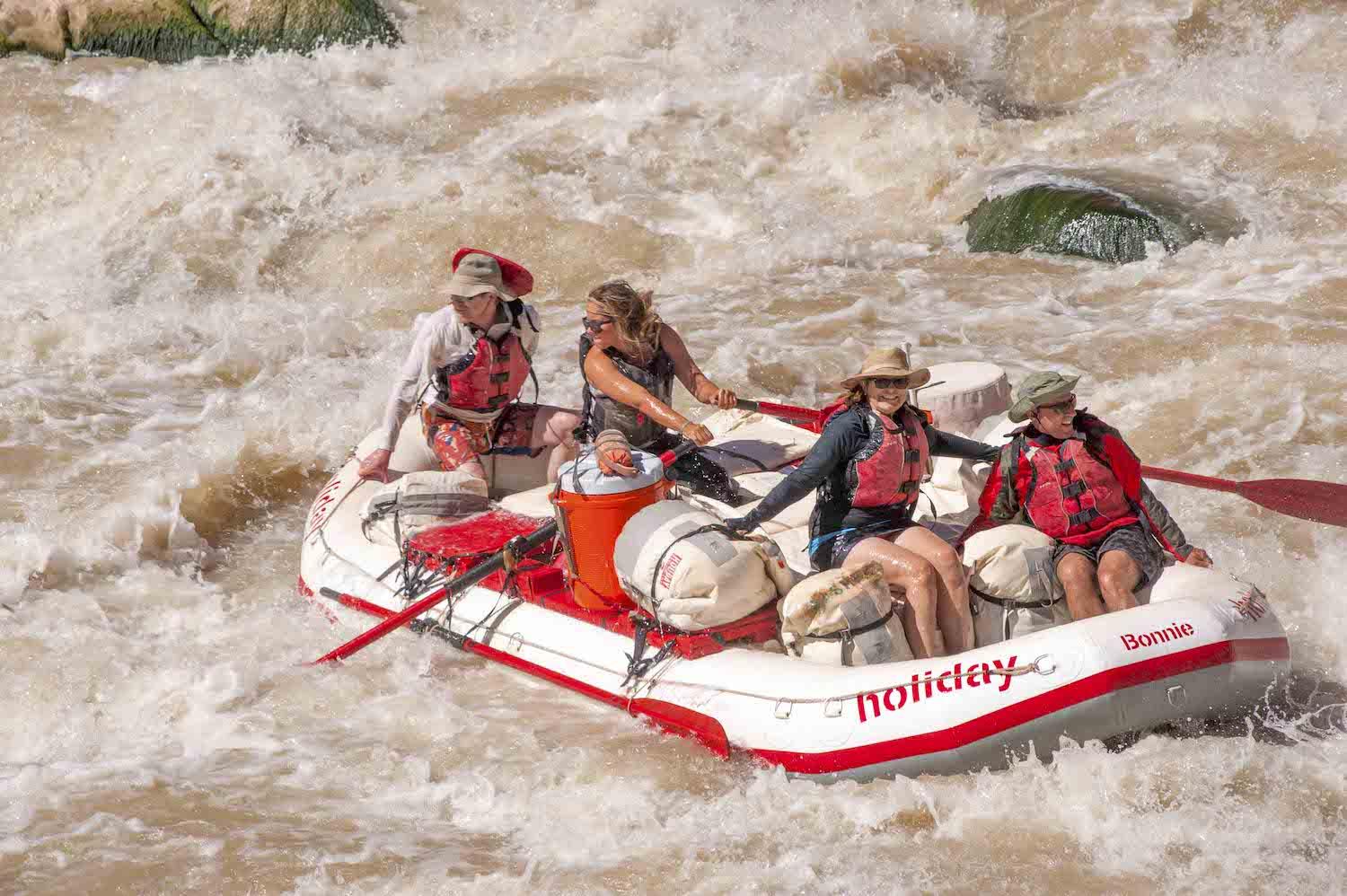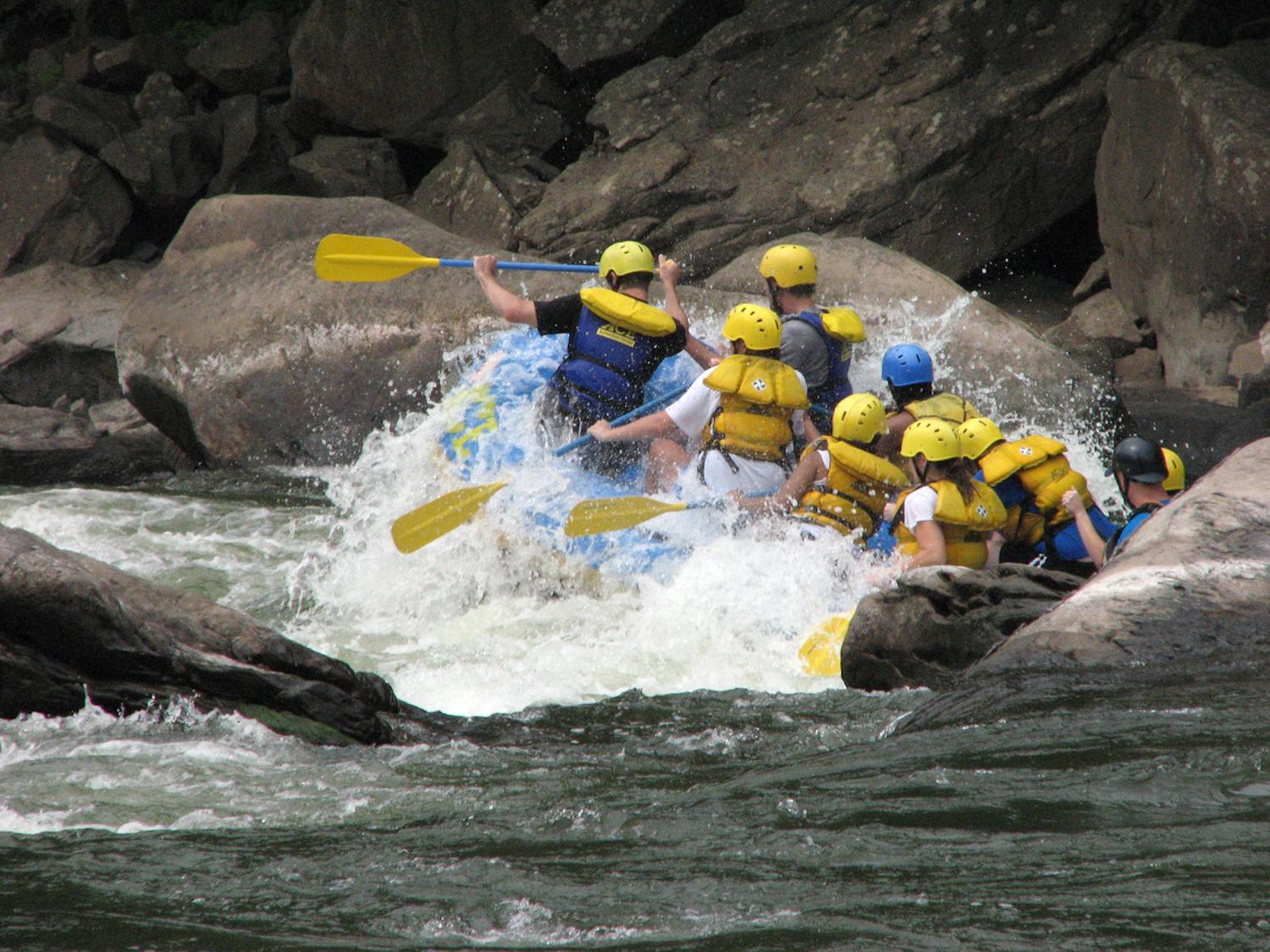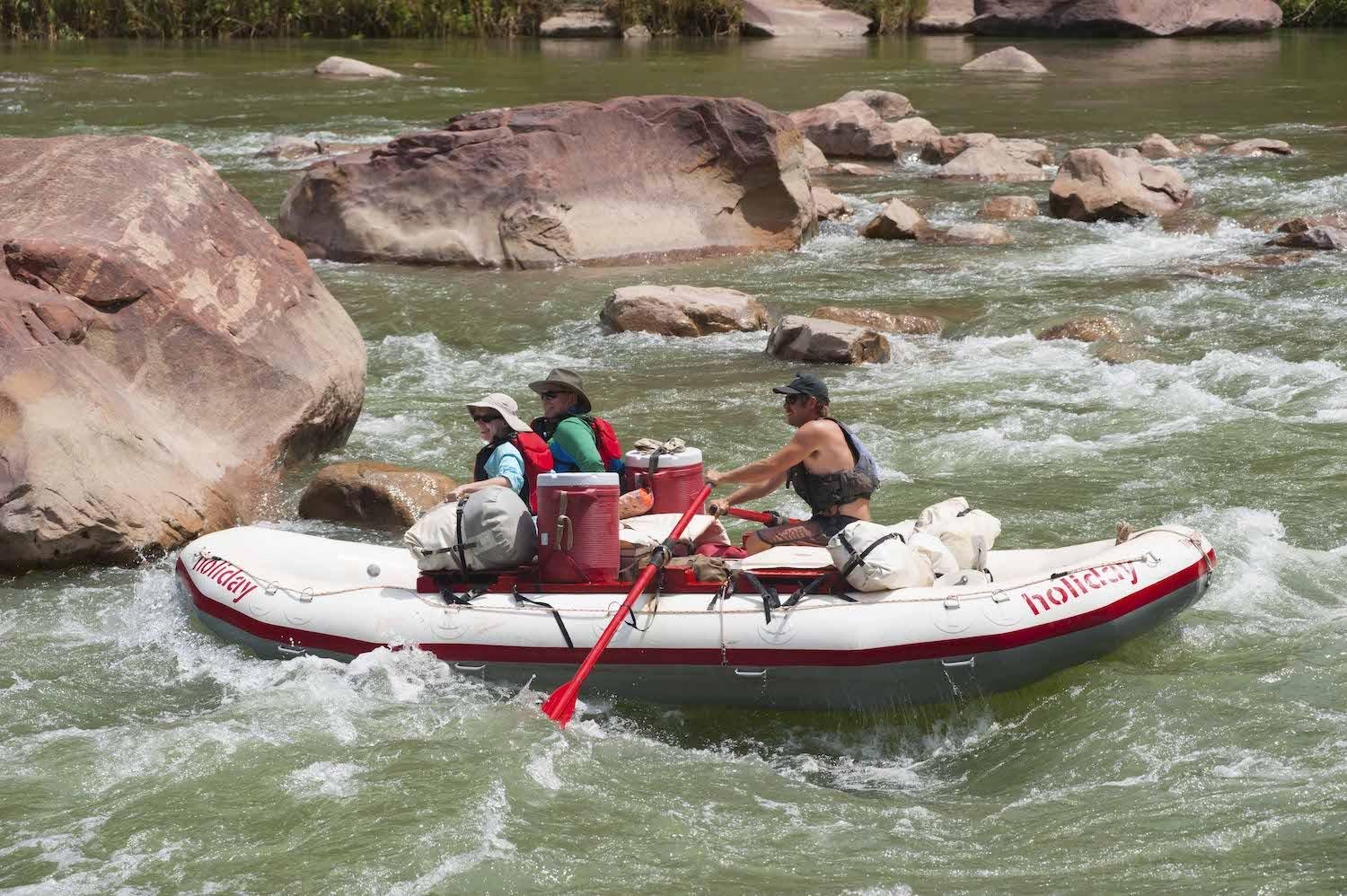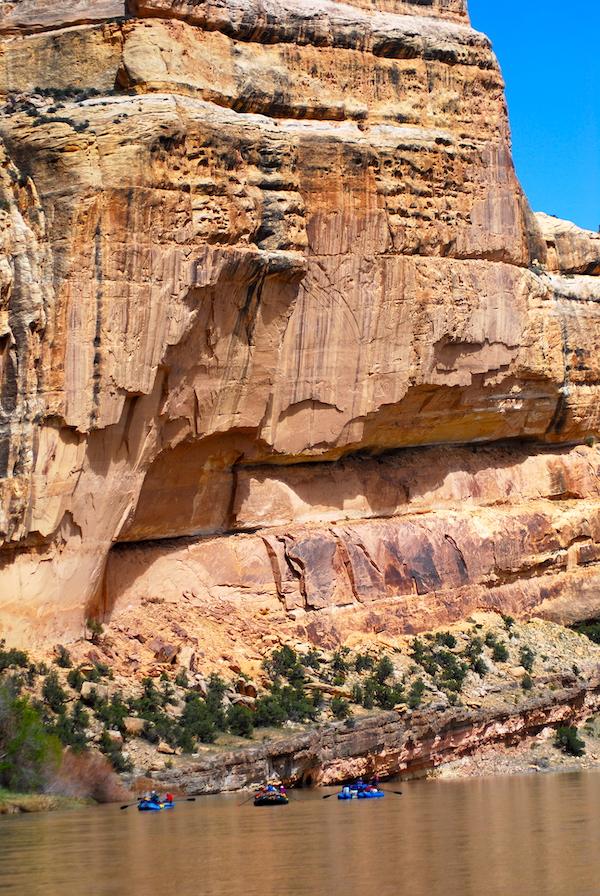
Normally wild Cataract Canyon in Canyonlands National Park is expected to be much wilder this year/Patrick Cone file
River Runners Will Need To Strap In For A Wild Ride
By Patrick Cone
“All the snow has turned to water,” Souvenirs- John Prine
What better way to spend a summer vacation than floating down a wild river? Whether in a canoe down the Ozark National Scenic Riverways in Missouri, a day-trip down Montana’s Flathead River, or a multi-week adventure deep in the Grand Canyon, it’s time to plan your trip. If you have the gear and expertise then apply for a permit for any number of park adventures, kayaking on Yellowstone Lake, floating the spectacular Lodore Canyon along the Green River in Dinosaur National Monument, or running one of the country's oldest rivers in New River Gorge National Park and Preserve.
Of course, doing it yourself means having a lot of gear, from rafts, oars, coolers, camping gear, kitchen equipment and the required life vests, plus the skill set for a raft, canoe, kayak, or dory. Taking along someone familiar with the stretch is a good idea too. With permit in hand, review the rules and regulations, and start planning your menu, pulling together your gear, give your boat a good once-over, and head on out to the put-in. It may seem like a lot of work, but the rewards are overwhelming, and you’ll keep coming back.
Of course, if you’d rather leave the planning to someone else, then go with an experienced outfitter. First figure out if you want to be deep in the desert canyons, hardwood forests of West Virginia, or paddling next to glaciers. Match the adventure level to your own comfort level and go for it. You’ll enjoy terrific beachside dinners, exquisite scenery and the solitude that we all crave from everyday life. There’s an outfitter, and trip, for every river.
Eastern Options
Maybe a trip down the New or Gauley rivers in West Virginia is to your liking. While the West was inundated with record snowpacks last winter, back East it was a lot drier. Skip Heater is the owner of New and Gauley River Adventures, based in Lansing, West Virginia. “Unlike the Western rivers we aren’t dependent on the snowmelt,” he says, “though we had a wet winter and our water table is up.” Heater offers trips on the 105-mile-long Gauley River, which joins the New River for another 250 miles, within the New River Gorge National Park and Preserve. They are among the oldest rivers on the continent.

Running the New River at times involves some tight squeezes and quick turns/NPS file
And they’re plenty exciting. The New River’s rapids range from Class II to IV, but during spring run-off it’s more like Class IV-V. The Upper Gauley River is the wildest ride, with Class V rapids, such as Lost Paddle and Pillow Rock. The 14-foot Sweet’s Falls is a memorable ride too, and trips are limited to those 16 years and older. Most river runners aim to ride the Gauley in September and October when the U.S. Army Corps of Engineers schedules releases from the Summersville Dam.
Out West, the Southwestern drought was substantially mitigated by one of the biggest winters in decades. On May 1, the snowpack in the Upper Colorado River Basin was 150 percent of normal, while that in the Sierra Nevada was 237 percent of normal in early April. As that snow turns to runoff, it likely will produce a rafting season for the record books with high water, big rapids, and plenty of thrills. Bottom line: It’s going to be a wild time on the Western rivers this summer.
Western Options
Over a dozen atmospheric rivers pummeled California and beyond last winter. The Colorado River Basin Forecast Center’s predictions show up to 145 percent increase on the Upper Green River, from 135-200% increase on the San Juan River, and an astounding 340%-710% increase on the Little Colorado River in Arizona. The American, Stanislaus, Merced and Tuolumne rivers on the western Sierra Nevada will be rocking as all of that water heads downhill too. Overall, it’s going to be a summer for the record books for river rafting.
O.A.R.S has been taking people down rivers since 1969. Steve Markle, vice president of sales and marketing says, “We're currently looking at snowpack over 100 percent of average on every river we run and, in several drainages, we're closer to 200 percent of average. We've enhanced our screening process for guests and we're enforcing increased high-water minimum ages for most of the spring and early summer on many of our popular family trips. if you want to take children in the 7- to 11-year-old range rafting this year, you might want to plan for a trip a little later in the season.”

The Green River through Lodore Canyon of Dinosaur National Monument is a Western classic/Patrick Cone file
This year’s flows along the Colorado River system will be high water, and a long season, according to Tim Gaylord, director of operations at Holiday River Expeditions based in Salt Lake City. “You can look at the basins and as far as the Colorado River we’re on par with the biggest years with water totals. Last big year was in 2011.” (But they probably won’t be quite the levels of 1983 and 2011 because the reservoirs aren’t full.)
“Cataract Canyon will go big this year,” Gaylord adds, as all eyes are on the Colorado Basin River Forecast Center. “They had been predicting 48,000 cubic feet per second (cfs).” Or more. That means the Big Drops will be even bigger, and the ride even wilder. To that end, Holiday has adjusted its minimum age level on Cataract Canyon to 16 years old.
The bottom line is that the flows all depend upon the weather in the next two months. And while all eyes were on snowpack during the winter, how the snow melts will determine what happens downstream. A cool, wet spring delays the melt, and once hot weather hits the rivers will be rocking. Warm, dry spring weather lets the snowpack come down easy, for a consistent river season. And while no one knows what’s going to happen in the next two months, companies are watching snowpack and long-term forecasts closely.
“The Yampa River has the potential to run the biggest,” says Gaylord, “around 20,000 cfs. That’s where we’ll see the most significant jump.”
The Yampa River has no upstream dams, so it’s pure runoff coming down from the Rocky Mountains.

Though located in northern Utah and Colorado, the Yampa River takes you through sandstone canyons that dwarf rafters/Kurt Repanshek file
“The good news,” adds Gaylord, “is that the guides won’t have to work so hard getting downstream.” Which means more time in camp, hiking side canyons, fishing, or sight-seeing. Carving through a landscape of sandstone cliffs, the Yampa is serene in some places, rambunctious in others. Warm Springs Rapid is considered one of the West’s classics. As with the Green River through Lodore Canyon, you’re likely to come upon bighorn sheep during your float.
Western Rivers Expedition’s Brandon Lake describes their planning process: “We prepare for high water by providing specific highwater training to our guides utilizing the experience of older guides who have seen all water levels to educate the less experienced. We also adapt the type of boats that we use. In high water, we use larger, more stable rafts which are more suitable for larger rapids. In high water, some rapids become larger while others flush over and don't exist. Part of our training is teaching how key rapids change based on flows and how maneuvering through particular rapids will change.”
Meanwhile, the big Kahuna of whitewater rafting is still the Colorado River through Grand Canyon National Park. It’s nearly 300 miles of placid backwaters, side canyon waterfalls, and of course some of the largest rapids on the continent, such as Horn Creek, Crystal, and the ominous Lava Falls. There are no day trips in the Canyon, and trips can last from one to three weeks. But, once you’re in the canyon, you are truly away from civilization, and it can truly change your life.
Looking North
Up north, the Glacier Raft Company floats the Flathead River along Glacier National Park’s western and southern boundaries. For the adventurous, inflatable kayaks will give a thrill. You can even spend a half-day fly fishing and the other half whitewater rafting. Keep your eyes open for riverside bear tracks, mountain sheep, and eagles circling high above.
Even further north, the Last Frontier’s rivers are like no others. There, it’s tundra, rock and ice, surrounded by towering glacial peaks. You can spend two weeks with Copper Oar Rafting, paddling amongst the icebergs, then head down the Nizina, Chitina, and Copper rivers to the Gulf of Alaska. For the next two weeks you will travel those three rivers all the way from the interior of Wrangell-St. Elias National Park to the Copper River Delta on the Gulf of Alaska.
So, plan ahead for the trip, or trips, of a lifetime this summer. Get on the water. Introduce your family to the wonders and the joys of going with the flow.


Comments
Great suggestions!